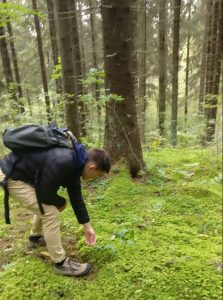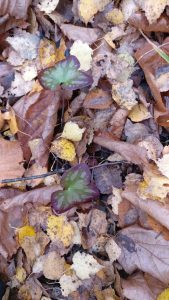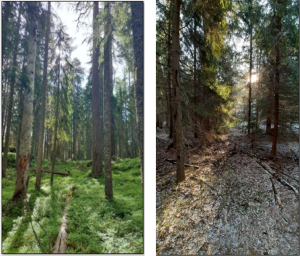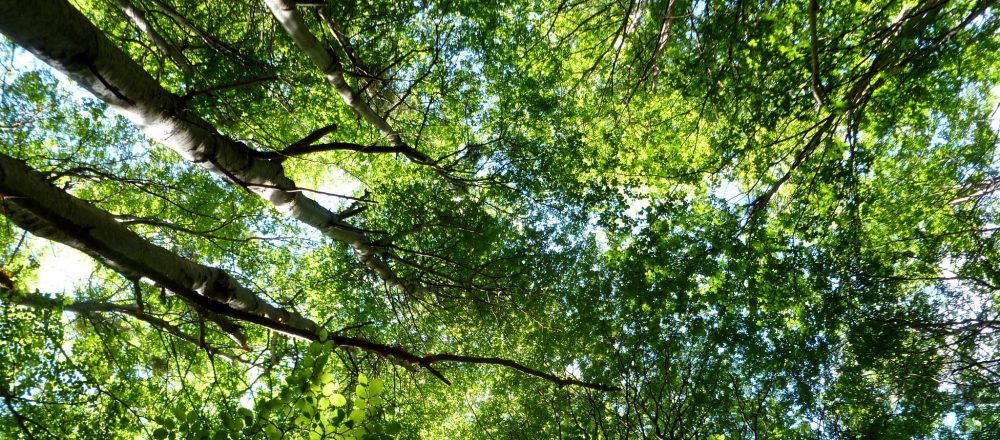In a new paper just out in Agricultural and Forest Meteorology, we explore how extended canopy closure in oak and birch forests at Lammi Biological Station in southern Finland affects the growing season for common understorey forbs.

The paper describes an experiment to test the effects of climate warming which may extend the length of time that canopy trees in a forest keep their leaves into the winter. One puzzle associated with climate change is whether plants growing on the forest floor benefit more from the extended warm periods in the spring and autumn, or whether these warm periods mean that canopy trees retain their leaves for longer and thus restrict the light reaching the ground and available there for photosynthesis.

In an experiment comparing stands of oak, birch and spruce, we tested the potential for photosynthesis, retention of chlorophyll, and colouration of understorey plant species on the forest floor throughout autumn and the start of winter. Our main finding was that the increase in light received and change in its spectral composition following canopy leaf fall was the main trigger of senescence in the understorey. Those understorey species able to keep photosynthesizing effectively into late autumn were benefitting the most from warmer temperature and an extended closed canopy period.

